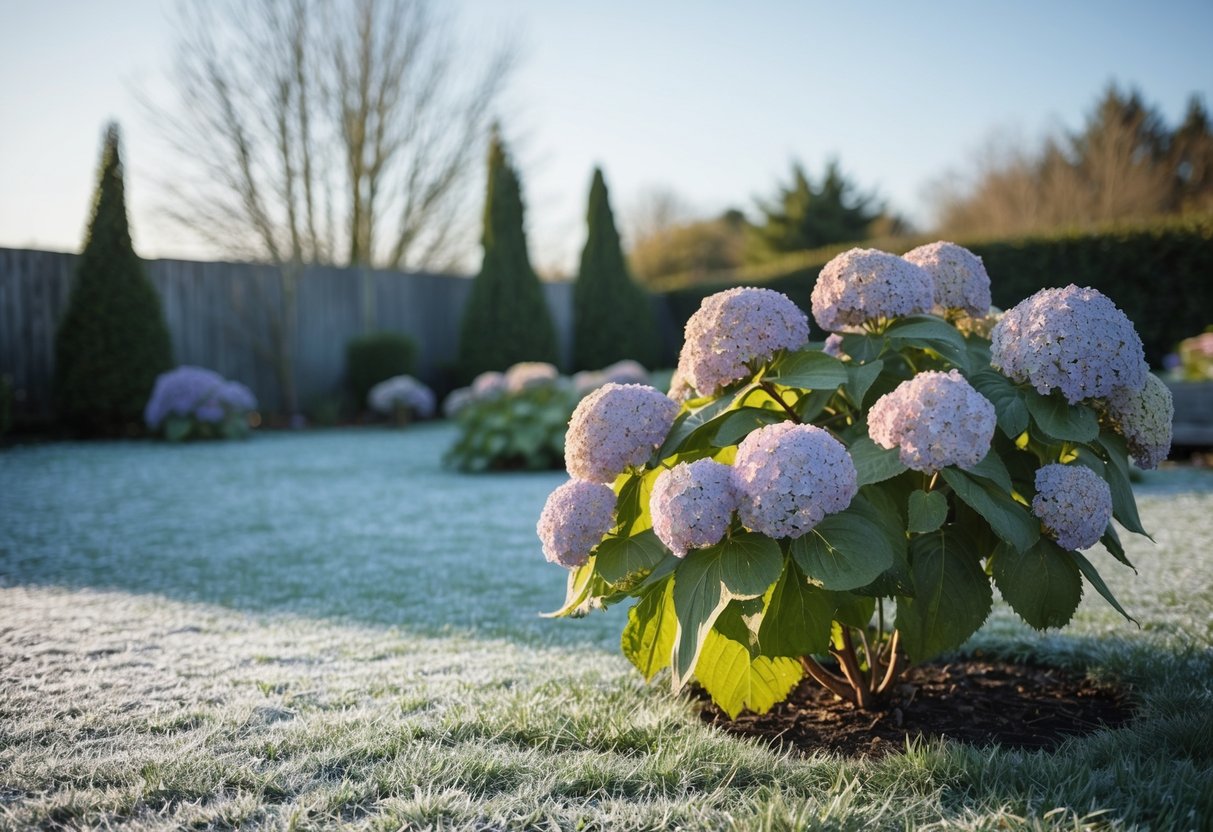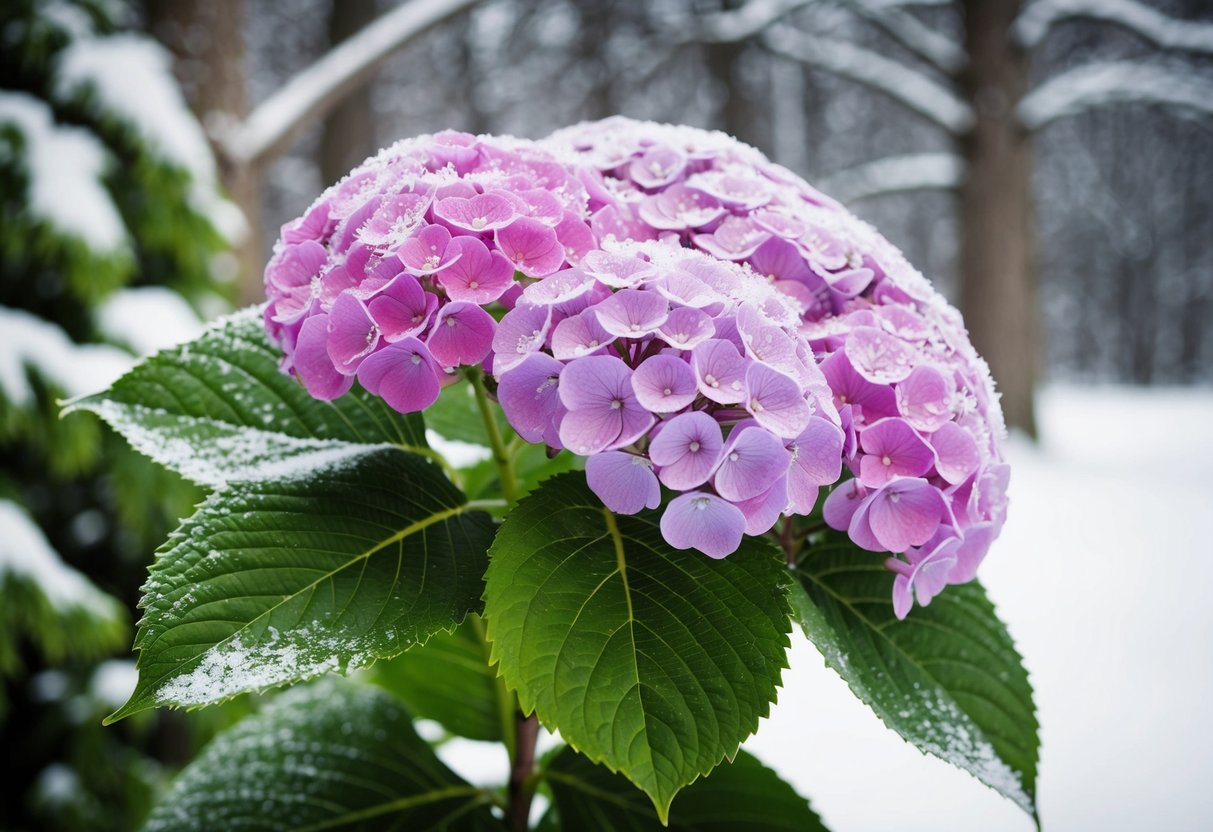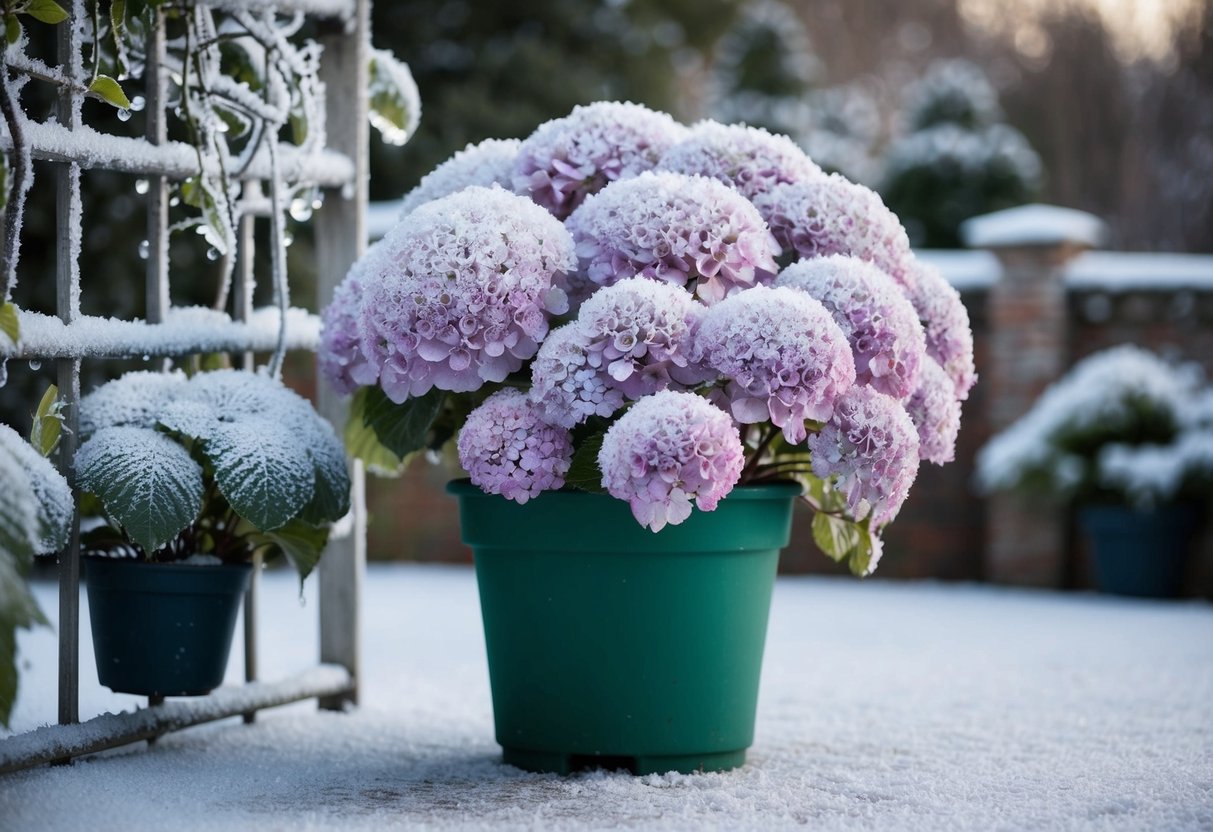Will Hydrangeas Come Back After a Freeze? Tips for Recovery
When cold weather hits, you might wonder if your hydrangeas will bounce back from a freeze. Don’t worry too much. Hydrangeas are quite hardy and can often survive a winter freeze. Some types, like those that bloom on new wood, are especially resilient.

Yes, hydrangeas can come back after a freeze, as long as they haven’t been exposed to severe, repeated cold stress. The plant’s ability to recover depends on several factors, including the variety and your care routine during the cold months. You may see fewer blooms, but with the right conditions, your hydrangeas should recover.
Your care during winter can help your hydrangeas thrive. Add a layer of mulch to keep roots warm and hydrated during the colder months. This simple step can make a big difference, ensuring your flowers make a strong return when the temperatures rise.
Understanding Hydrangea Hardiness

Hydrangeas are known for their stunning blooms, but their survival in cold weather varies. Different types can handle winter differently. Knowing which hydrangea varieties are tougher and the significance of USDA Hardiness Zones is key to their care.
Hydrangea Varieties and Their Cold Tolerance
Hydrangeas vary in how well they can handle the cold. Hydrangea paniculata and oakleaf hydrangeas are among the hardiest varieties, making them a good choice if you live in cooler areas. These types can withstand colder temperatures and are generally more resilient.
On the other hand, you have macrophylla hydrangeas and smooth hydrangeas. The macrophylla type, known for its large, vibrant flowers, may not be as cold-hardy. Such types might need extra protection during harsh winters with mulch or covers. Understanding the specific needs of each hydrangea type can help them thrive and bring beautiful blooms.
The Significance of USDA Hardiness Zones
The USDA Hardiness Zones help you determine if certain plants can survive and thrive in your area. Hydrangeas generally do well in zones 3-7. Knowing your zone is crucial because it guides you on what temperatures your hydrangeas can tolerate and how you should care for them in winter.
If you live in a zone at the lower end, consider choosing varieties like hydrangea paniculata, known for their hardiness. Be mindful of the resources available at your local gardening center; they can provide plants suited for your specific climate, ensuring a more successful growing experience. Remember, the right hydrangea for your garden depends on matching the plant’s hardiness to your local climate conditions.
Preventive Measures for Winter Protection

To keep your hydrangeas safe during cold months, it’s important to use effective winter protection methods. These can include applying mulch for insulation and covering the plants with materials like burlap.
Applying Mulch for Insulation
Using a thick layer of mulch is a great way to insulate your hydrangeas from winter’s harsh conditions. Mulch helps maintain soil temperature and moisture. You should apply a 4 to 6-inch layer around the base of the shrub. Materials such as oak leaves can offer good insulation. Ensure the mulch covers the entire root area but keep it a few inches away from the plant’s stems to prevent rot. Regular mulching not only provides warmth but also enriches the soil.
Utilizing Burlap and Other Coverings
To protect your plants further, consider using burlap or other coverings. Start by wrapping burlap around the plant, creating a barrier against cold winds. You can also build a frame using stakes and then wrap the burlap around it. For added insulation, fill the space between the burlap and the plant with leaves or straw. Alternatively, you might use insulation cloths or frost blankets for enhanced protection. These methods keep your hydrangeas shielded and help them stay healthy during winter.
Recovery and Care Post-Freeze

After a cold snap, your hydrangeas might appear damaged. With proper care, these hardy plants can recover well. Focus on assessing damage and pruning correctly to encourage healthy new growth.
Assessing and Repairing Winter Damage
Start by checking your hydrangeas for signs of winter damage. Look for brown or withered leaves and stems that may have been affected by the frost. Different hydrangea varieties, like limelight or annabelle, react differently to cold. It’s important to know your plant’s specifics. For instance, branches might seem lifeless, but they could still be alive inside.
To help your plants recover, water them deeply after the soil thaws. Add well-balanced fertilizers containing potassium, phosphorus, and nitrogen. These nutrients can support the plant’s recovery by replenishing what’s lost during the harsh weather. Consider using a mulch layer to protect roots and maintain soil moisture.
Pruning for Health and New Growth
Pruning hydrangeas plays a vital role in their revival. Wait until the danger of frost has passed before you prune. Trim back damaged parts only, allowing the healthy sections to encourage new growth. Use sharp pruning shears to make clean cuts just above a healthy bud.
Knowing when and how to prune depends on your hydrangea type. For example, annabelle hydrangeas bloom on new wood, so you can cut them back more aggressively. Meanwhile, varieties like limelight prefer lighter pruning to maintain shape and encourage blossoms. Proper pruning helps remove dead material, fosters air circulation, and prepares your hydrangeas for vibrant flowering.
Optimizing Hydrangea Health Year-Round

To keep your hydrangeas thriving no matter the season, focus on providing the best possible care through proper sunlight exposure, watering, and nutrient management. Additionally, safeguard your plants from pests and harsh environmental conditions to ensure their health.
Sunlight, Watering, and Nutrient Needs
Hydrangeas love sunlight but prefer the gentle morning rays. Aim to plant them where they receive sun in the morning and shade in the afternoon. Endless Summer varieties can tolerate more sun, while others might need added protection.
Watering is key. Keep the soil consistently moist without waterlogging. About 1 inch of water per week is typically enough, but increase this during dry spells. Mulch with pine straw or compost to retain moisture and build soil health.
For nutrients, choose a balanced fertilizer containing nitrogen, phosphorus, and potassium. Applying this in spring supports robust growth. If your soil is not naturally acidic, adjust it with soil amendments. Adding aluminum sulfate can enhance the blue hues of many hydrangea flowers, especially in acidic soil conditions.
Protection from Pests and Harsh Elements
Safeguarding your hydrangeas is crucial. Keep an eye out for common pests like aphids and spider mites. Treat infestations with insecticidal soap and encourage beneficial insects to visit your garden. Rodents can also be a threat, so consider physical barriers if needed.
During winter, shield your plants from harsh winds. Use burlap or protective covers to help them withstand winter winds and cold snaps. Planting them in sheltered spots can reduce damage. For extra insulation, add a layer of mulch around the base to protect roots against freezing.
Pruning can help too. Trim dead or damaged branches to encourage healthy growth and prepare for the next blooming season. This care plan will encourage abundant blooms and a flourishing garden.
Special Considerations for Potted and Climbing Varieties

Taking care of potted and climbing hydrangeas during cold weather requires specific actions. It’s vital to protect potted hydrangeas from freezing temperatures and manage climbing varieties to prevent cold damage.
Winter Care for Potted Hydrangeas
Potted hydrangeas are more vulnerable to freezes because their roots are above ground. To protect them during cold months, you should move potted hydrangeas indoors or to a sheltered location when temperatures drop. A garage or basement works well.
If you don’t have indoor space, you can insulate the pot with a thick layer of mulch or straw around the base. You can also place the pot inside a burlap sack stuffed with leaves for added warmth. Consider using a wire cage filled with leaves around the pot.
Climbing hydrangeas, like lacecap or panicle hydrangeas, are generally hardy shrubs. They still need some care to thrive during winter. Use mulch at the base to insulate the roots. This helps keep the soil temperature stable and retains moisture.
For extra protection against harsh weather, wrap your climbing hydrangeas with burlap or frost cloth. If you’re in an area prone to heavy snow or ice, consider using chicken wire around the plant to support it and prevent breakage.
Prune any damaged or weak stems before winter hits to help the plant stay strong. This encourages healthy growth when spring arrives.







